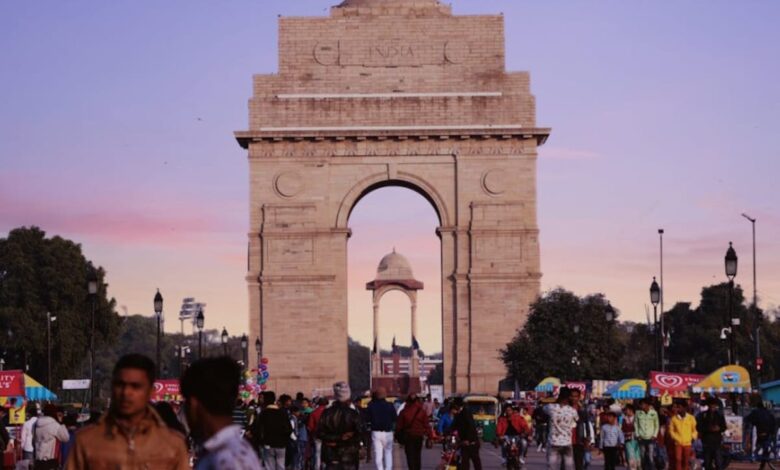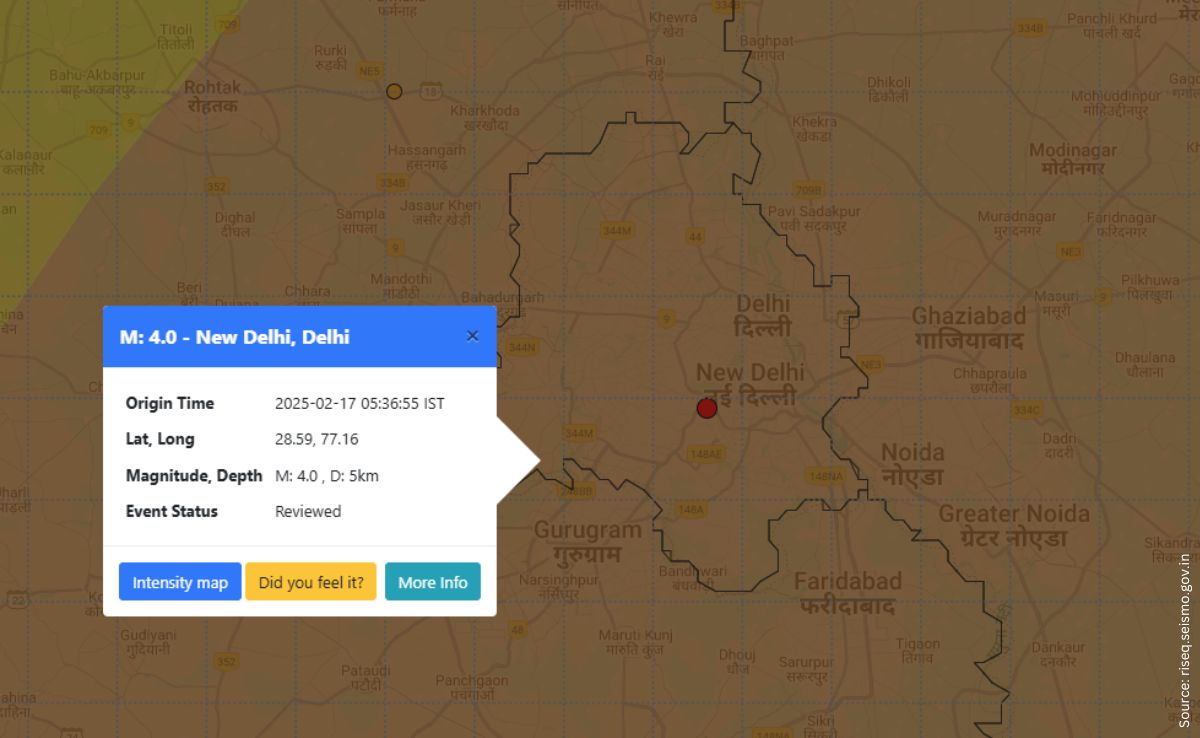Why Delhi Faces High Risk Of Earthquakes


Prime Minister Narendra Modi soon appealed to the residents to stay calm and follow the safety protocols. Stating the authorities are keeping a close watch, he said online that the residents must stay alert for possible aftershocks.
Read: “Never Felt Like This”: Delhi Residents On Strong Earthquake Tremors
Several residents claimed they were panicked seeing the buildings shaking while a passenger at a railway station said he felt that a train was running underground.
Such earthquakes are not unusual in Delhi due to its geographic location. The city has been rocked by frequent such tremors in the past – in 2020, at least three earthquakes above 3.0 magnitude hit the national capital, followed by a dozen aftershocks.
Delhi is located in the Seismic Zone 4 which has a higher risk of earthquakes, according to the Delhi Disaster Management Authority. This zone has a fairly high seismicity where earthquakes generally occur in the range of 5-6 magnitude, and even 7-8 occasionally. The zoning, however, is a continuous process that keeps changing.
Read: “Stay Alert For Possible Aftershocks”: PM Modi On Delhi Earthquake
Since 1720, the city has been rocked by at least five earthquakes above 5.5 magnitude on the Richter scale, reports suggest.
The earth’s crust – the thin outermost layer – is made of large and solid slabs of rock known as tectonic plates. There are about seven major and minor such plates. These plates move very slowly, causing deformations that lead to earthquakes.
In North India, including the Himalayas, the collision of the Indian tectonic plate with the Eurasian plate contributes to seismicity or the frequency of earthquakes. These plates store energy like a spring and when they slip above one another, it releases the energy and results in an earthquake.
“Seismicity around Delhi appears to be associated with a major geological structure, which is known as the Delhi-Hardwar Ridge. It coincides with the extension of the Aravali Mountain belt beneath the alluvial plains of the Ganga basin to the northeast of Delhi towards the Himalayan mountain,” according to the DDMA website.
Do Earthquakes Make Delhi Unsafe?
Besides being in Seismic Zone IV, a SWOT analysis by the National Disaster Management Authority (NDMA) has found that the national capital also faces threat due to the high number of non-earthquake resilient buildings, high population density, unplanned and unsafe structures, and congested areas.
According to the Vulnerability Atlas of India (1997), for shaking intensity VIII, Delhi has a high damage risk for 6.5% of houses and a moderate damage risk for over 85% of houses. The DDMA suggests that these estimates are made on simplistic assumptions and further study is needed to understand the vulnerability of different types of constructions.
The DDMA notes that an earthquake disaster would have huge economic and political implications – beyond the statistics of deaths and injuries. The agency says that though the city cannot rule out a possible disaster, it can sustain strong tremors due to its “peculiar” geological setting.
“Unfortunately, most buildings in Delhi may not meet Indian standards on aseismic constructions and may be considered deficient from a seismic safety viewpoint. Thus, there is a real potential for a great earthquake disaster in Delhi, the implications of which go well beyond casualties because of its political and commercial significance,” according to the DDMA.




